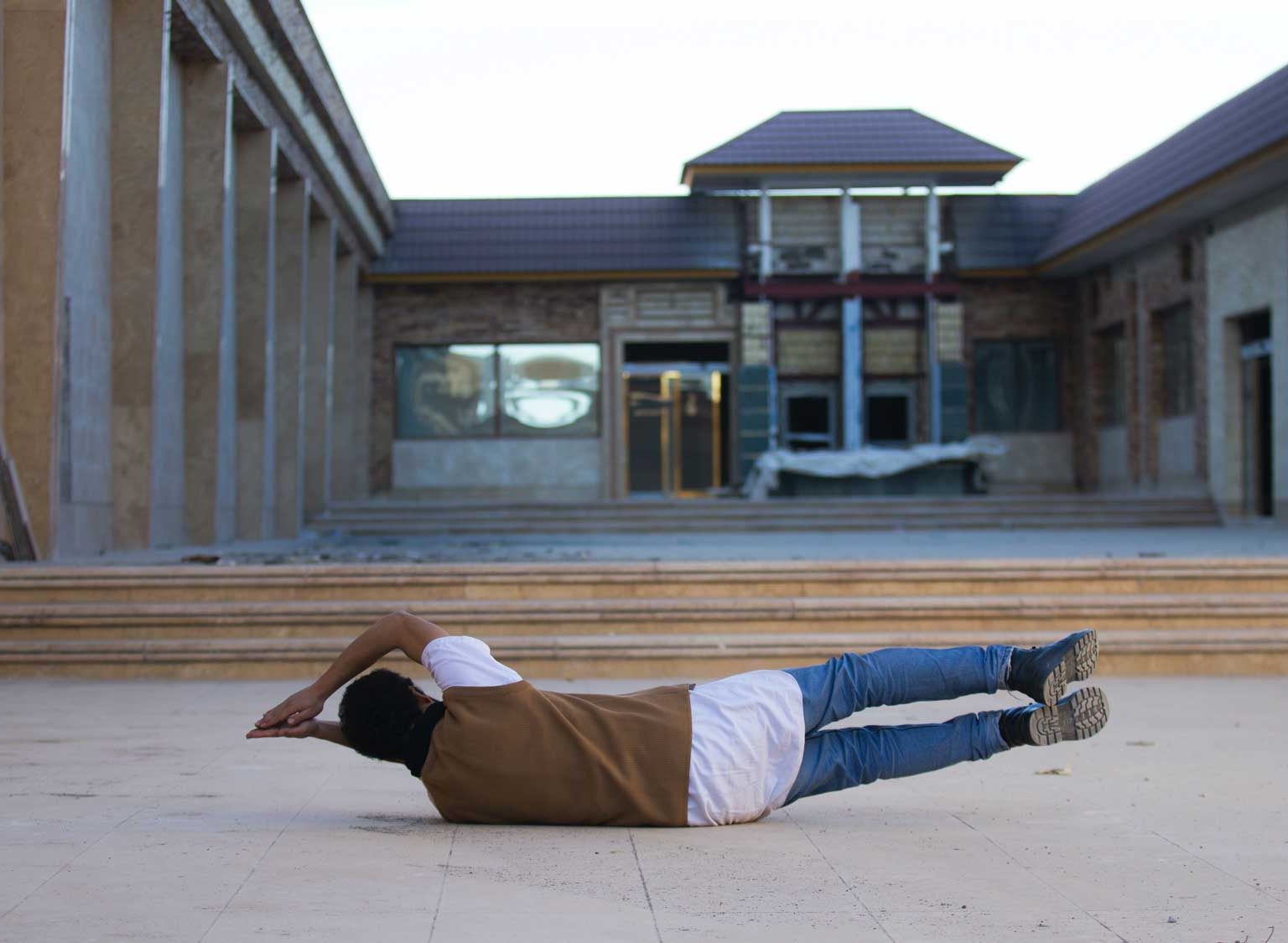Demonstrating how the page works
We arrived in dribs and drabs and met in the bar. Everyone we interacted with was lovely – people helped to find bike parking, the ticket-desk team recognised our name and greeted us, the bar staff were fun and friendly. These things are difficult to quantify but their effect is huge; the friendly welcome set us up for a great evening (and to revisit soon).
About the show
I loved the show; I’m not entirely sure why.
Contemporary dance can be obtuse, focused on the technical and not the entertainment. Tonight’s show had that potential but there was something so evocative about the overall feeling of the work that it swept me up and carried me along. Who sounds pretentious now, eh?
In interviews and programme notes, Scottish Dance Theatre’s Fleur Darkin tells us that the show was inspired by the book, Just Kids, Patti Smith’s recollections of her relationship with Robert Mapplethorpe.
What’s the story?
It’s the story of two artists trying on different clothes and different identities, adopting and adapting until they found the personalities that fit, having each other’s backs while they experimented in a hostile climate.
The name, Velvet Petal refers to the emerging of butterflies, shedding their chrysalis and emerging in beautiful flocks (can insects form flocks?) to live short colourful lives.
It’s a story set in the fabled New York of Warhol, Basquiat, and Bowie, of drugs and warehouse parties, of eye-liner and beat-poetry. These are the tales that my generation adopted as a template for everyday life.
We were originally attracted by the promise of a punk soundtrack. I was expecting an edgy, frantic, arse-hanging-out, Michael Clark kind of show. But this was a much more subtle affair.
Opening the show, dancer Adrienne O’Leary sits in a spotlight, setting the first of three scenes. She wants to be noticed, she wants us to remember her, she spells out her name. But she doesn’t want to appear pushy, she doesn’t want to be that kind of person.
She is, I suppose the Patti Smith character, introducing themes (including Robert Mapplethorpe’s Polaroids) but I’m not sure I really followed any kind of narrative.
It’s a kind of party
The whole show is a kind of party. But it’s rarely the frantic main party with a dance-floor, it’s the louche, drunken, stoned, tired activities in the peripheries; the getting ready, the cloakroom, the back-bedroom coupling (or tripling), the after-party come-down, the morning-after hangover.
There are set pieces and solos but never in isolation, there is always something going on elsewhere, on and off the stage. The ensemble use the space brilliantly, finding unlit crannies to occupy, to collapse, to cuddle, beyond the fourth wall.
It felt to me that each dancer was allowed to bring their own style and training into the piece. That must see the work evolve and, to push the butterfly metaphor, metamorphose into something new with each line-up change. It keeps the show fresh but it must also mean that the original narrative arc has long-since fragmented.
I was particularly mesmerised by Pauline Torzuoli who moves in a different way to anyone else I’ve seen. Apparently she and choreographer Hiedi Vierthaler collaborate on a Stream-Flow movement method. There you go.
The music (arranged by Torben Lars Sylvest) was far from the advertised ‘punk’ soundtrack, even if you stretch the word to encompass a New York Dolls definition. It was a hypnotic mix of Fourtet, LCD Soundsystem and P J Harvey, echoing as if through walls and ceiling.
I may not previously have thought of Leonard Cohen as dance music, but now I can’t get Tower of Song out of my head (or my swaying body).

Check out episode two, available to stream now, for £2.50,
or sign-up to the series for £10.

